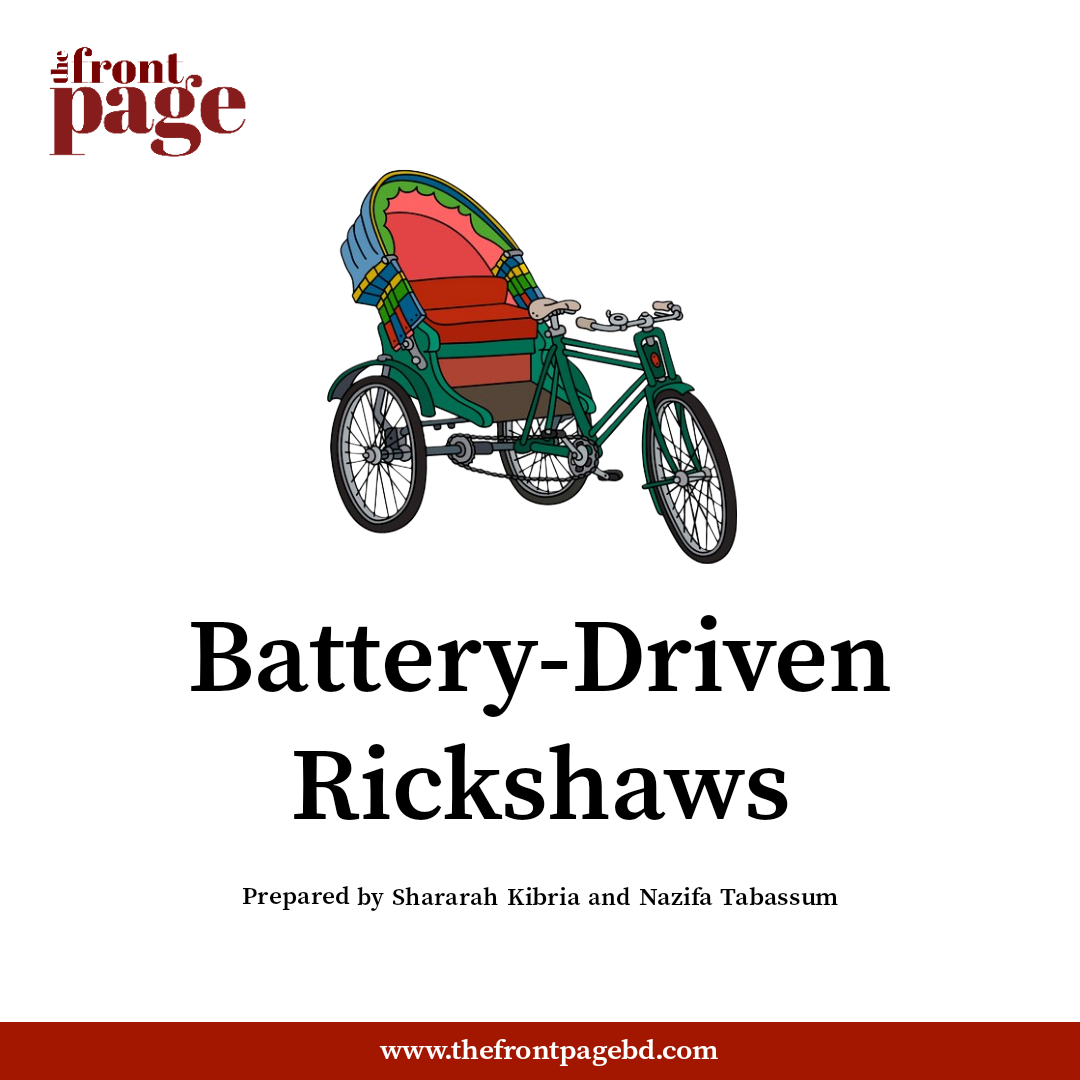From the beginning of the early 1800s, a three-wheeler known as RICKSHAW is a popular meansof transport. Over the decades, rickshaws stood out as a representation of the South-Asian culture, lifestyle and soon, became part of an economical entity.
Innovation and convenience gave rise to the modified transport called Battery-Driven Rickshaws.The number of batter-driven rickshaws have exponentially increased in metropolitan cities like Dhaka – in the size of at least thousands.
Unemployed individuals, without sufficient technical skills and slight physical disabilities found jobs with these vehicles. These rickshaws, unlike the traditional ones operate in high speed, without much effort, the low fare just added to the popularity of these rickshaws.
Even though, it brought convenience and inclusivity, in terms of employment – these rickshaws also had a massive drawback. They gave rise to high levels of traffic, and heightened pollution rates.
Battery-run rickshaws were also suspected to be fatal to life, as they recorded multiple accidents.
The vehicle’s poor braking system on the front wheel and high centre of gravity allowed it to brake inadequately and often times, the entire rickshaw toppled over during turning. All of these meant that the vehicle did hold a lot of risk for its passengers
Battery-run rickshaws did open a lot of doors for people, however it came with a lot of unfortunate incidents too. Thus after taking into account the incidents that unfolded, the Home Minister of Bangladesh, Asaduzzaman Khan announced a ban on battery-run rickshaws on June 20th 2021 due to safety concerns and traffic congestion.
He said
“These vehicles are plying in different cities and this is a concern for the government,”
According to many people, a new improved design of the rickshaw could have been the answer to the problems, and not banning.

this is a dummy comment!